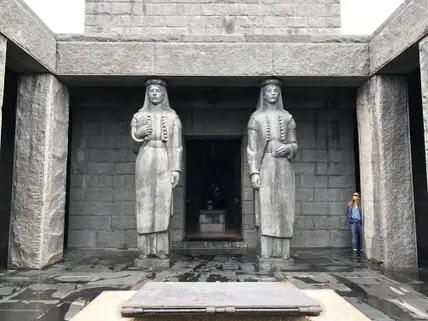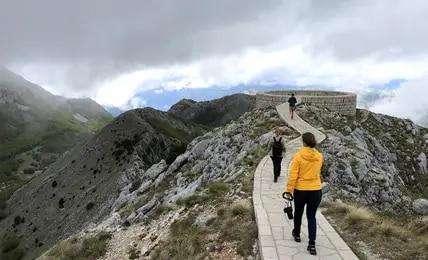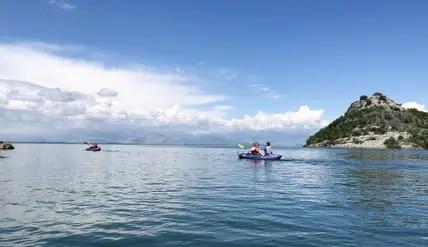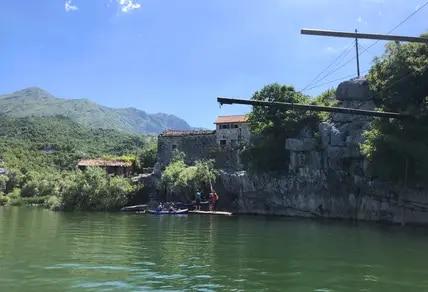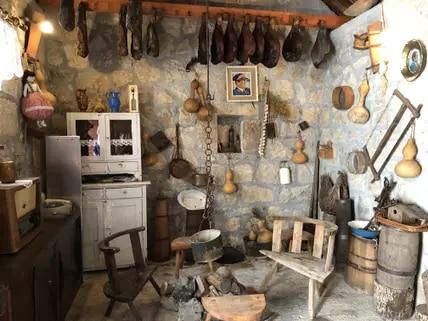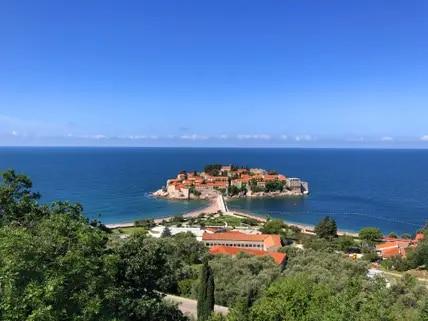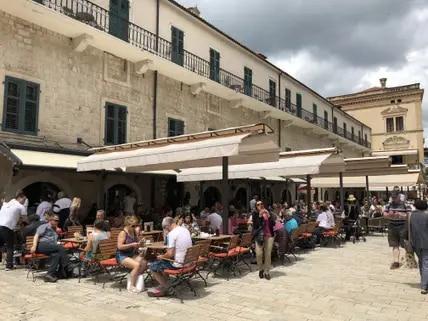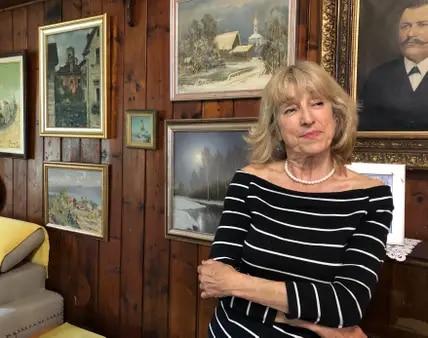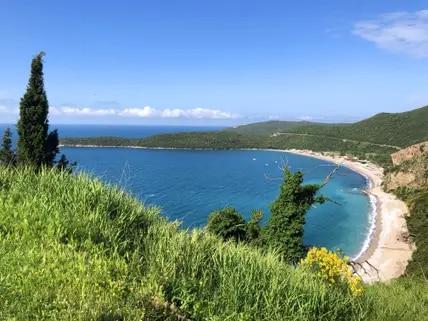Hairpin bend after hairpin bend, the minibus fights its way up the road. There are 25 bends on this part of the route; they are numbered consecutively. In each one, numbers painted in blue announce how many have already been negotiated. It is narrow on the old panoramic road from the 19th century that connects the towns of Kotor and Cetinje. It leads through the Lovcen National Park. Lovcen is the central mountain massif of Montenegro. "It is the Olympus of Montenegro," says tour guide Rosanda Pupovic.
On the second highest mountain of Lovcen, Jezerski Vrh, a mausoleum is enthroned at an altitude of almost 1,700 metres; it serves as Petar II's final resting place. The prince-bishop was the secular and spiritual head of Montenegro between 1830 and 1851. He laid the foundations for a modern state.
The monumental mausoleum of Petar II on Mount Jezerski Vrh shows his importance for the Montenegrins.
© Source: Katrin Schütze-Lill
But the Montenegrins venerate him above all for his poetry. His main work, "The Mountain Wreath", is a heroic epic about the fight for freedom against the Ottomans that every schoolchild in the Balkans knows. Montenegrins draw a lot of national pride from the fact that the Turks were never able to completely subjugate the region.
At this point you will find external content from Qualtrics Ireland Limited that complements the article. You can view it with one click.
I agree to external content being displayed to me. This may transmit personal data to third party platforms. More on this in our data protection information.
In the spirit of the poet prince, tour guide Rosanda Pupovic poetically describes Montenegro as a "small Orthodox island in the great Ottoman sea". This is where the heart of Montenegro beats.
Viewing platform offers a picture-postcard panorama
On the viewing platform of the mausoleum, one can understand why Petar II wanted to be buried on this mountain. An impressive postcard panorama is offered here. On a clear day, you can see over the Adriatic Sea in the west to Italy, in the southeast over Lake Scutari to Albania and in the north to the roof of Montenegro, the 2,500-metre-high Durmitor Mountains.
From the actual mausoleum of Petar II, it is only a few steps to the viewing platform, which offers a panoramic view over large parts of the country.
© Source: Katrin Schütze-Lill
Montenegro is a small country. With an area of just under 14,000 square kilometres, it is not even as big as Schleswig-Holstein. Perhaps this is why the inhabitants have a penchant for superlatives, which are presented to visitors everywhere. The mausoleum has also been given a superlative: It is said to be the highest in the world.
Lake Scutari is the largest lake in the Balkans
An equally scenic destination is Lake Scutari in southern Montenegro. Framed by green forested mountains, the largest lake in the Balkans - another superlative - is an oasis of peace and a bird paradise. More than 200 species have their breeding grounds here, including pelicans, eagles and cormorants.
Lake Scutari in the south of Montenegro is the largest lake in the Balkans. It is well suited for water sports.
© Source: Katrin Schütze-Lill
During a kayak tour on the lake, we head for the small island of Grmozur, in whose ruins birds nest today. "The island used to be Montenegro's Alcatraz, a prison for political prisoners," says Vukoman Sekulic, who paddles with us across the lake. Only those who were non-swimmers were imprisoned so that no one could escape. The same applied to the guards of the island prison, we learn from the sporty 39-year-old, who offers guided kayak tours and hikes for tourists.
At noon we anchor with Danilo and Lidija Lekic, two locals who own a simple summer house on the lakeshore. While we make ourselves comfortable on their terrace and enjoy the view of the lake, the friendly couple serve risotto and crispy fried carp, a speciality of the region. No excursion restaurant, no hotel for miles - the lake between Montenegro and Albania is a natural paradise.
During a kayak tour on Lake Scutari, it is worth stopping for lunch at the Lekic family. They have their own mooring.
© Source: Katrin Schütze-Lill
When you see the national border everywhere, you can't help but think about your neighbours. "The Croats have no sense of humour, the Bosnians are stupid, the Serbs are stingy and the Montenegrins are lazy," says tour guide Vukoman Sekulic ironically about the ex-Yugoslavs. A Croatian colleague can laugh heartily about the joke.
Dealing with the past is relaxed
The way the socialist past and the Balkan wars of the 1990s are dealt with is relaxed. In a mountain village a picture of state founder Tito hangs on the wall, in Kotor's city gate an inscription is dedicated to him. "Tito is revered, many mourn the old days," tour guide Rosanda explains his presence. "With the Yugoslav passport, you could travel wherever you wanted. We were recognised all over the world."
Many ex-Yugoslavs - mainly Serbs and Kosovars - still spend their summer holidays on the Adriatic coast. They understand each other, not only linguistically. There seem to be no reservations, perhaps also because Montenegro was largely spared the war.
Transfigured past: In the mountain village of Njegos, you can see a farmhouse with traditional furnishings - including a portrait of Tito on the wall.
© Source: Katrin Schütze-Lill
Only a few kilometres separate Lake Scutari from the Adriatic coast. But it feels like there are worlds in between. Whether it's the rugged mountain world on the quiet lake or the Mediterranean liveliness on the coast - both have their charm.
The Adriatic Sea in Montenegro also has its charm
Turquoise-blue bays glisten in the sun, the hotels of the tourist centre of Budva are visible from afar. One restaurant follows the next along the shore promenade. Even in the low season, the place is bustling with activity. Really worth seeing is the beautiful old town with its winding alleys, which are closed to car traffic. Pedestrians can stroll undisturbed past the windows of the small shops and browse for souvenirs.
The island of Sveti Stefan, which is connected to the mainland by a causeway, is reserved for the rich. It is, however, a popular photo motif.
© Source: Katrin Schütze-Lill
If you drive along the coastal road in a southerly direction, you will pass a number of seaside resorts and bays. From the town of Bar onwards, minarets tower more frequently into the sky, more women wear headscarves, and Albanian is spoken in addition to Montenegrin. Shortly before the Albanian border in the district of Ulcinj, Albanians make up the majority of the population with over 80 percent. Albanian is officially the second official language there.
The Venetian-influenced north of the country is a clear contrast to the south. Only 90 kilometres separate the Albanian-Islamic Ulcinj in the south from the Catholic and Serbian-Orthodox Kotor in the north of the small country. Kotor is probably the most beautiful town in Montenegro, and it is not without reason that it holds the title of Unesco World Heritage Site.
Kotor is a Unesco World Heritage Site
A thick city wall has surrounded the old town since the Middle Ages. The nameless maze of alleys within the walls leads to squares called Wood Square, Weapons Square or Flour Square according to their historical function. The squares and church towers are easy to find your way around. How postmen deliver letters, however, remains a mystery to us.
Weapons Square is the largest square in the old town of Kotor.
© Source: Katrin Schütze-Lill
Kotor is a jewel box with old churches, Renaissance and Baroque palaces that bear witness to the almost 400 years of Venetian influence on the port city. This has not gone unnoticed by cruise operators. Several ships often anchor in the fjord-like bay, which offers a particularly beautiful view from the fortress 260 metres above the city. The climb up the almost 1,500 steps is tedious, but worth it. If you didn't know any better, you might think you were in Norway.
The cuisine is Italian-influenced
The food in the Boka kotorska, the Bay of Kotor, is Italian-influenced. Vlasta Mandic welcomes us in her house in the old town and cooks local specialities for us. The spry pensioner is particularly proud of her homemade gnocchi. This is accompanied by wine from her own production, Mediterranean vegetables, local ham and cheese as antipasti. The passionate hobby cook likes to explain to her guests how typical regional dishes are prepared. She knows so much about it that she has written a cookbook about the cuisine of the bay - the "Bokelian Cuisine".
Amateur cook Vlasta Mandic has dedicated her own cookbook to regional food: Bokelian Cuisine.
© Source: Katrin Schütze-Lill
In August, Vlasta Mandic enthuses, there is a big culinary festival in the old town for which she also cooks. The festival is part of the carnival, which was once imported from Venice and is celebrated there, but for tourist reasons has been moved to high summer. A curiosity that shows how important tourism is for Montenegro.
The currency in Montenegro is the euro
Another curiosity concerns money. The euro has been the official currency since 2002. This makes Montenegro the only country in the world that, without being a member of the European Union, officially uses the euro as its currency. Another superlative. Several more could be listed that underline the uniqueness of this tiny Balkan country. But Montenegro doesn't really need them.
West of Budva: On the pebble beach Jaz, which is considered one of the most beautiful in the country, there is also live music in summer.
© Source: Katrin Schütze-Lill
The most important factor is the compactness of the small country. The short distances allow visitors to hike in the mountains in the morning, stroll through neat towns like Kotor at noon and swim in the Adriatic Sea in the afternoon. There are not many corners in Europe where you can find such a great variety of landscapes and cultures in such a small area. The country is the superlative: Montenegrissimo!
Tips for your trip to Montenegro
Getting there:Monten egro has two airports: in the capital Podgorica and in Tivat on the Adriatic Sea. Montenegro Airlines, for example, offers direct flights from Hanover and Leipzig to Tivat. The flight time is about two hours.
Entry: Tourists only need a valid identity card to enter the country.
Best time to travel: High season is in the summer months from June to August. The beaches can get crowded. Spring and autumn are much quieter.
Currency: The official currency is the euro. All major credit and debit cards are accepted.
The trip was supported by FTI Touristik and The Chedi Lustica Bay. The editorial team alone decides on the selection and orientation of the content.
Related articles
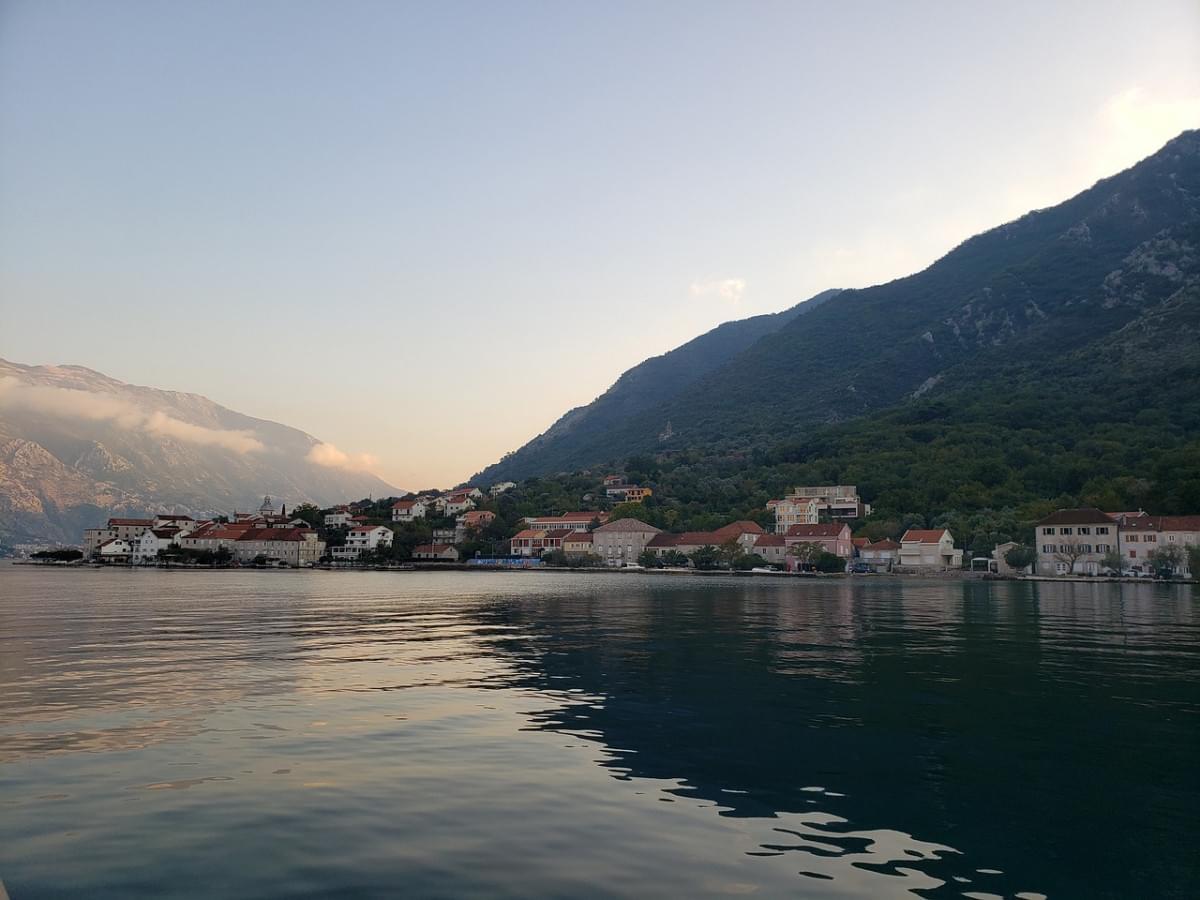
Kotor, Montenegro: what to see, where to eat and what to do in the evening
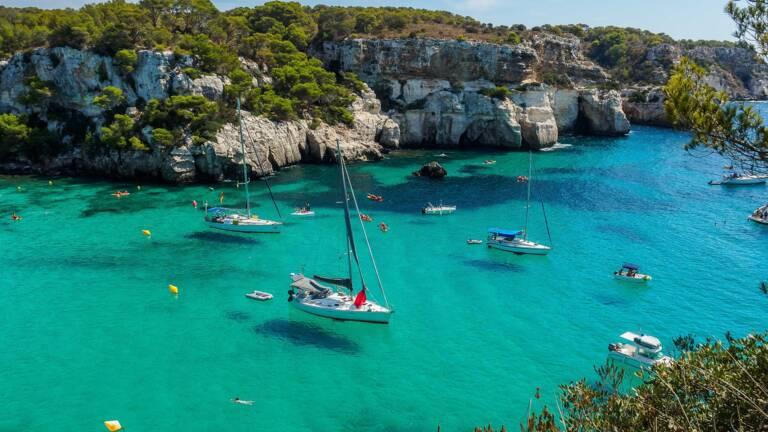
What are the most beautiful places in Montenegro?
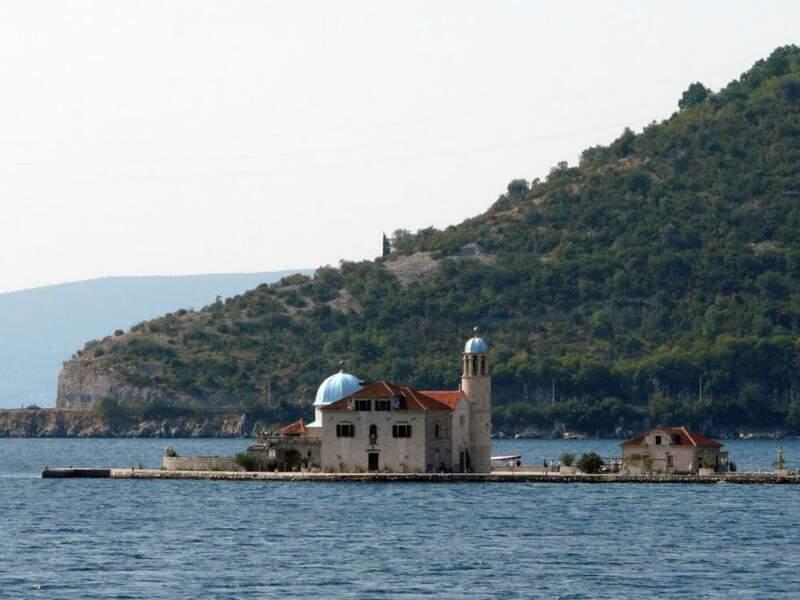
Discovering the Bay of Kotor, Montenegro
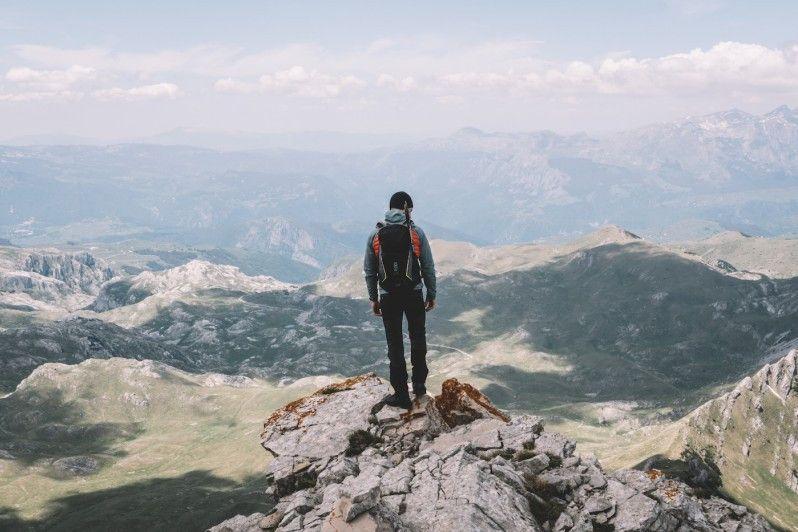
Montenegro less beaten
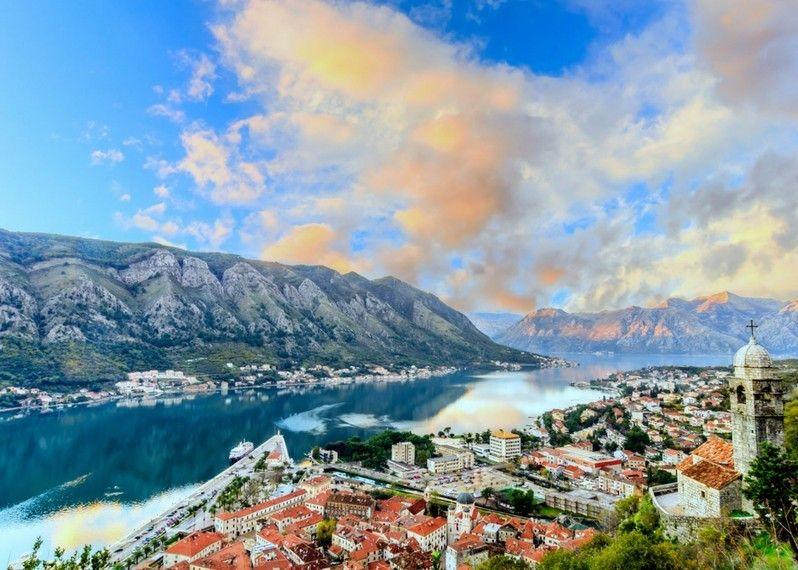
Adventure in Montenegro: the Bay of Kotor
Best time to visit Montenegro 2024 - Weather & 34 things to do
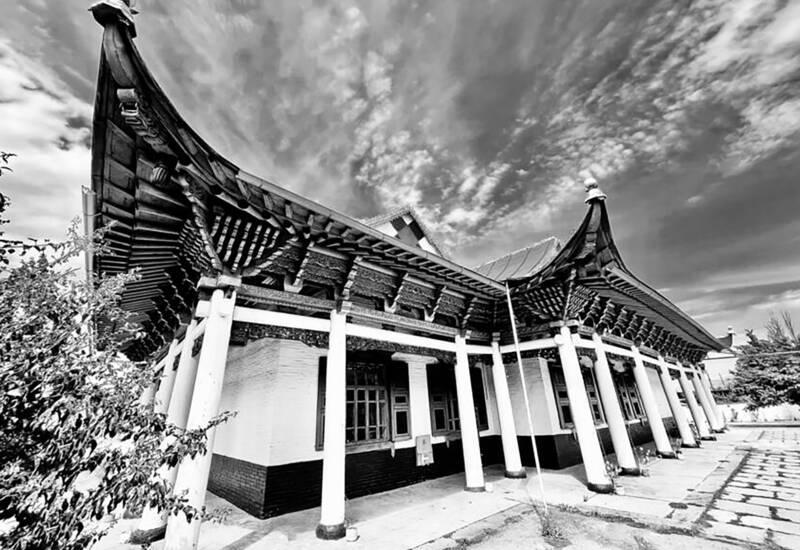
Breathtaking scenery and no currency: five things to know about Montenegro
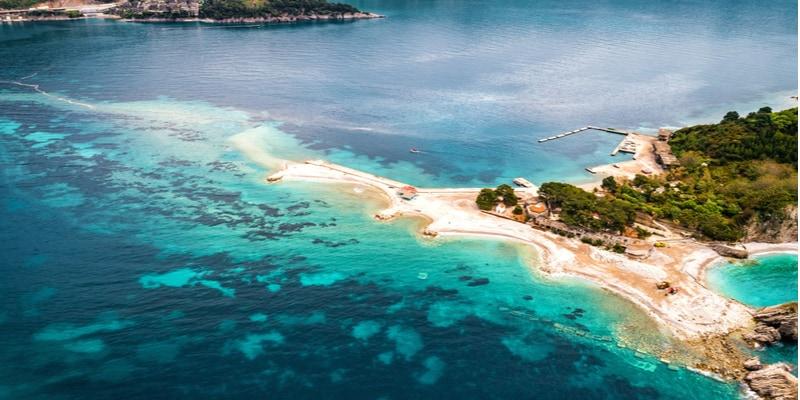
11 reasons to visit Montenegro
